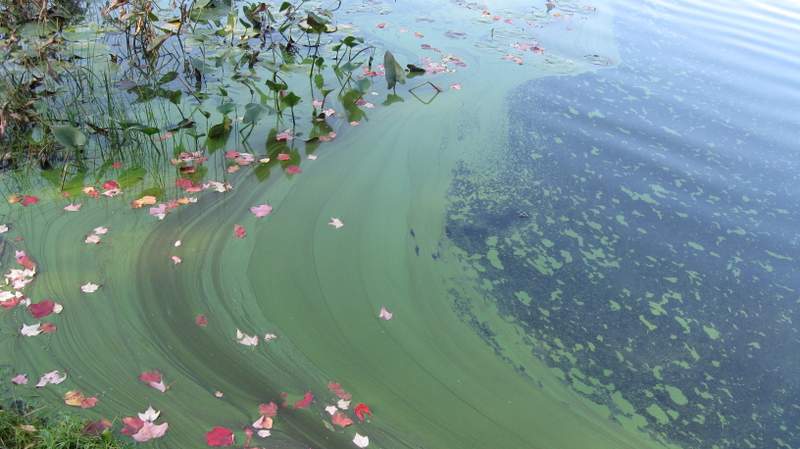Cyanobacteria in Drinking Water
Providing guidance for public water systems when they suspect a cyanobacteria bloom in a water supply source.
Cyanobacteria are microscopic organisms found naturally in lakes, streams and ponds. Once known as blue-green algae, they are actually photosynthetic bacteria.
When present at low density they do not cause recreational or aesthetic problems. However, when conditions are optimal for their growth, these organisms can sometimes multiply to form harmful cyanobacteria blooms (HCBs) that can potentially produce toxins capable of affecting liver and kidney functions or the central nervous system, or causing skin irritations.
In addition to producing toxins, cyanobacteria can pose other treatment challenges for public water suppliers, including taste and odor issues and shortened filter run times. While not regulated as drinking water contaminants, some cyanobacteria toxins have been included among the parameters that certain public water systems using surface water have been required to monitor under the Unregulated Contaminants Monitoring Rule beginning in 2018.
In 2015, USEPA issued health advisory levels for two cyanobacterial toxins. The information below is provided to guide drinking water suppliers in preventing, identifying and responding to cyanobacteria blooms.
More information is available in the Cyanobacteria and Drinking Water: Guidance for Public Water Systems fact sheet and the EPA webpage Cyanobacterial toxins monitored under the Fourth Unregulated Contaminant Monitoring Rule (USEPA).
Related Content
 NHDES Bloom Response Strategy
NHDES Bloom Response Strategy
This document describes NHDES’ recommended protocol for water system to monitoring for and respond to suspected blooms of harmful cyanobacteria (cyanoHABs) in public water supply sources. The protocol describes the roles of both water systems and NHDES.
Grants for Cyanobacteria Monitoring
NHDES provides small grants to public water systems that utilize surface water sources to assist in the development of programs to monitor their source and finished water for indicators of cyanobacteria blooms and cyanotoxins. Applications are accepted any time. Contact the Drinking Water and Groundwater Bureau at (603) 271-3906.
Prevention and Treatment
The EPA and American Water Works Association have more guidance documents to help water systems prevent and manage harmful cyanobacteria blooms on their respective “Managing Cyanotoxins” webpages.
Are You Experiencing a Bloom?
Report a bloom: Submit a Bloom Report Form or scan the QR code below with your smartphone camera.

With other questions, call (603) 848-8094 (Cyanobacteria HAB Coordinator mobile – primary contact)
Drinking Water and Groundwater Bureau
(603) 271-2513 (8:00 AM – 4:00 PM weekdays except holidays)
(603) 223-4381 (outside business hours)




